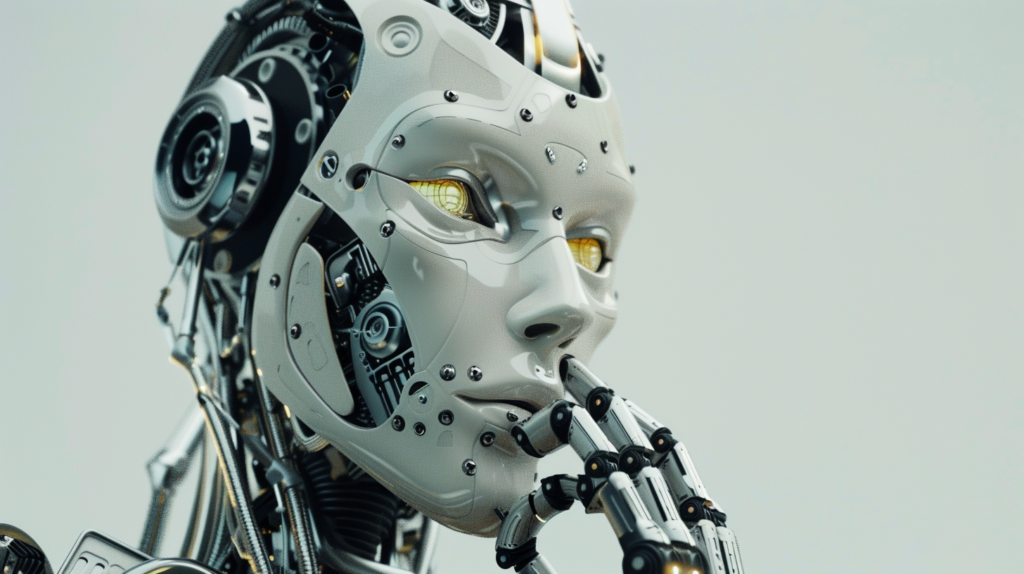What Is Artificial General Intelligence (AGI)

Artificial General Intelligence (AGI) stands at the cusp of redefining the essence of machine intelligence. It aims to replicate the nuanced and broad-spectrum cognitive capabilities inherent in humans. This ambition to create systems that not only excel in predefined tasks but also possess the ability to learn, adapt, and apply knowledge across an array of disciplines marks a significant departure from the specialized artificial intelligence applications prevalent today.

As we edge closer to this paradigm, the conversation around AGI is fraught with both exhilarating possibilities and profound ethical dilemmas. It invites a deeper exploration into its potential to reshape our world.
Defining AGI
At its core, Artificial General Intelligence (AGI) represents an ambitious frontier in AI research, aiming to create systems with cognitive abilities on par with those of humans across a broad spectrum of tasks. This concept of intelligence transcends the limitations of narrow AI, which is confined to specific, well-defined tasks. Instead, AGI endeavors to develop a more holistic form of artificial intelligence that mirrors the general cognitive capabilities inherent in human intelligence. The goal of AGI is not merely to replicate human thought processes but to construct systems that can adapt, learn, and apply knowledge in diverse contexts, thereby exhibiting a form of intelligence that is indistinguishable from that of humans.
The pursuit of Artificial General Intelligence (AGI) involves crafting systems capable of understanding, learning, and functioning across a variety of domains without the need for task-specific programming. This ambition extends beyond creating machines that can perform singular tasks with precision, aiming instead for a form of general intelligence (AGI) that can navigate the complexities of the world in a manner akin to human cognition. The implications of achieving AGI are profound, promising advancements that could revolutionize multiple industries by providing systems capable of independent problem-solving and innovation.
AGI Vs ANI Distinctions
Exploring the distinctions between Artificial General Intelligence (AGI) and Artificial Narrow Intelligence (ANI) reveals fundamental differences in their design, capabilities, and potential applications. AGI represents an ambitious frontier in AI research, aiming to replicate the broad spectrum of human cognitive abilities. This endeavor encompasses the development of machines capable of understanding, learning, and applying knowledge across diverse domains, mirroring the multifaceted intelligence of humans.
Unlike AGI, ANI systems are designed with a focus on specialization, excelling in specific tasks such as language processing or image recognition without the capacity for general reasoning or learning beyond their programmed area.
The ambition behind AGI is to create entities that not only replicate but also exceed human cognitive functions, incorporating self-awareness and consciousness—features that are conspicuously absent in ANI systems. This distinction underscores a profound divergence in capability and purpose: while ANI applications like chatbots and voice assistants serve targeted functions within current technological ecosystems, AGI aspires to a far-reaching impact, heralding a future where machines could autonomously adapt to and navigate a multitude of challenges across various sectors.
The transition from specialized to general intelligence embodies a monumental leap, marking AGI as a pinnacle of AI evolution distinct from the operational constraints of ANI.
The Path to AGI
How do we chart the course towards achieving Artificial General Intelligence, a realm where machines reflect human-like cognitive prowess across diverse tasks? The journey to AGI is a complex, multifaceted endeavor that necessitates a deep dive into the mechanisms of human cognition and the replication of these processes in machines. Central to this pursuit are advanced computational techniques such as deep learning and reinforcement learning. These approaches, rooted in the simulation of neural networks and the modeling of decision-making processes, respectively, are pivotal in enabling machines to learn from data and experiences autonomously.
Further, the development of sophisticated cognitive architectures plays a crucial role. These architectures aim to mirror the human brain’s structure and functioning, facilitating the integration of various cognitive processes in machines. This ambitious goal also demands an unprecedented level of interdisciplinary collaboration, bringing together insights from artificial intelligence research, neuroscience, psychology, and other fields related to understanding human cognition.
Progress in the path to AGI is bolstered by rapid advancements in computational power and the increasing availability of vast datasets. Such technological strides, combined with a concerted effort across disciplines, pave the way for breakthroughs in creating machines capable of general intelligence.
Potential Impacts of AGI
Building on the foundational advancements in computational techniques and interdisciplinary collaboration, the potential impacts of Artificial General Intelligence (AGI) on society and various industries are profound and multifaceted. AGI’s ability to automate complex tasks heralds a new era in operational efficiency, transforming sectors from manufacturing to finance with unparalleled precision. This leap in automation not only promises to elevate productivity but also to redefine the nature of work, compelling a significant shift in the global workforce dynamics.
Further, AGI stands at the forefront of addressing some of the most pressing global challenges. Its advanced problem-solving capabilities could offer innovative solutions to climate change, enhancing sustainability efforts through predictive analysis and optimization strategies. In healthcare, AGI’s potential to revolutionize personalized treatments and diagnostics could dramatically improve patient outcomes, making precision medicine more accessible and effective. Similarly, the education sector might witness a transformative shift with AGI-powered adaptive learning systems, offering customized educational experiences that cater to individual student needs.
These potential impacts, while promising, underscore the importance of navigating the development of AGI with careful consideration of ethical considerations to ensure responsible innovation. The integration of AGI into society and industry hinges on a balanced approach that weighs technological advancements against ethical imperatives, safeguarding the welfare of humanity.
Ethical Considerations
The development of Artificial General Intelligence (AGI) introduces a complex array of ethical considerations that necessitate meticulous scrutiny and proactive management to ensure alignment with societal values and safety standards. Central to these ethical considerations is the imperative of responsible innovation, which demands a careful balance between advancing AGI capabilities and safeguarding against potential harms.
| Ethical Consideration | Challenge | Solution |
|---|---|---|
| Biased Data | Can lead to discriminatory decisions and reinforce existing inequalities. | Implement robust data governance and validation frameworks to ensure diversity and fairness. |
| Human Control | Maintaining oversight and control over AGI to prevent unintended consequences. | Develop fail-safe mechanisms and clear protocols for human intervention. |
| Job Displacement | The automation of tasks could significantly disrupt employment. | Foster a dynamic workforce through re-skilling and education initiatives. |
| Regulatory Frameworks | Existing laws may be inadequate for the oversight of AGI. | Collaborate internationally to establish comprehensive and adaptive regulatory standards. |
| Responsible Innovation | Balancing technological advancement with ethical considerations and societal impact. | Engage in continuous dialogue with stakeholders and ethicists to guide AGI development. |
Addressing these ethical challenges requires a multifaceted approach that includes the development of sophisticated regulatory frameworks, the mitigation of biases in data, ensuring human control over AGI systems, managing job displacement, and fostering a culture of responsible innovation.

Frequently Asked Questions
What Is an Example of an Artificial General Intelligence Agi?
An example of Artificial General Intelligence (AGI) is IBM’s Watson supercomputer, which showcases extensive cognitive abilities across diverse tasks, signifying a significant advancement in the realm of AI with its comprehensive knowledge and adaptive learning capabilities.
What Does AGI Stand for in Artificial Intelligence?
In the realm of artificial intelligence, AGI stands for Artificial General Intelligence. This concept envisions AI systems with the capability to understand, learn, and perform any intellectual task that a human being can.
Is AGI Actually Possible?
The possibility of AGI remains a subject of considerable debate within the scientific community, influenced by advancements in computational power and AI research. Its feasibility, while theoretically conceivable, has yet to be demonstrated empirically as of 2023.
What Is the Difference Between True AI and Agi?
The distinction between true AI and AGI lies in their capabilities; while true AI may refer broadly to machines mimicking human intelligence, AGI specifically denotes systems with comprehensive cognitive abilities across diverse tasks, akin to human intellect.
Conclusion
In conclusion, Artificial General Intelligence (AGI) represents a paradigm shift in the realm of artificial intelligence, aiming to replicate human cognitive abilities across diverse domains. This ambitious endeavor not only promises to redefine the boundaries of machine capability but also poses significant ethical and societal challenges.
The evolution from narrow AI to AGI necessitates rigorous interdisciplinary collaboration, ensuring the development of AGI is aligned with ethical standards and contributes positively to humanity.
As research progresses, the realization of AGI continues to symbolize a pinnacle in AI aspirations, holding transformative potential across various sectors.







Responses